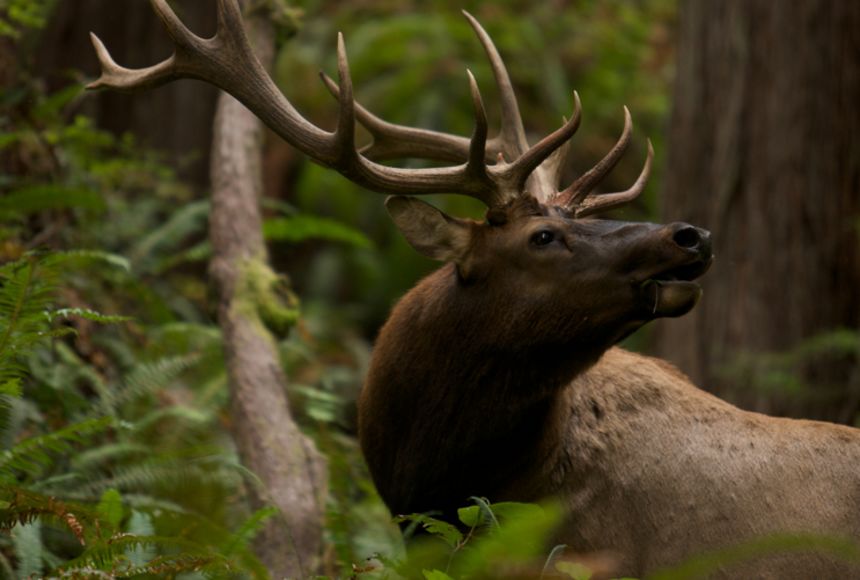If variety is the spice of life, then biological diversity makes Earth’s ecosystems spicy indeed. Biodiversity is a complex yet growing topic of interest not only to scientists, but also to policymakers across the globe. First coined by Walter G. Rosen in 1985, biological diversity—or biodiversity, as it is more commonly called—is defined as the “variety of life on Earth and the natural patterns it forms.”
In 1988, the United Nations Environment Programme (UNEP) assembled the Ad Hoc Working Group of Experts on Biological Diversity to explore the need to form a Convention on biodiversity. After years of working to adopt a set of guidelines, the United Nations (UN) declared the Convention as “formally entered into force” on December 29, 1993. Today, this group is known as the Convention on Biological Diversity (CBD).
The CBD is an international treaty for the conservation of biodiversity, the sustainable use of the components of biodiversity and the equitable sharing of the benefits derived from the use of genetic resources.
With 196 Parties, the CBD has near universal participation among countries. The Convention seeks to address all threats to biodiversity and ecosystem services.
In 2000, the UN General Assembly officially proclaimed May 22 to be the International Day for Biodiversity (IDB). The date was chosen to celebrate the adoption of the initial text of the CBD, on May 22, 1992. Thanks to its efforts, the Convention has participants from nearly all countries. Many areas of the planet are now being conserved as part of protected areas and biodiversity hotspots. The Convention continues to address threats to biodiversity by producing scientific reports and developing tools to assist in conservation efforts. On May 22, 2018, the 25th anniversary of the IDB was celebrated by participating countries all over the world.
So just how diverse is Earth, and why is this important?
At present, nearly 2.16 million species of organisms have been identified on our planet. These species run the gamut from complex plants and animals to microbes and other simple organisms. Millions more species have yet to be discovered. Biodiversity matters because all organisms within an ecosystem are interconnected. As such, when the diversity of organisms within an ecosystem declines, so does the ecosystem’s ability to function and survive.
Though biodiversity generally increases slowly, it can decrease suddenly and dramatically. Scientists think the biodiversity currently observed on Earth is the result of evolutionary and natural processes that have occurred over billions of years. Yet biodiversity has continued to decline for the past 20 years, taking with it precious pieces of Earth’s rich history. According to a 2016 report released by the World Wildlife Fund, populations of vertebrate animals have declined by 58 percent between 1970 and 2012. Freshwater species have experienced an 81 percent decline in the same time span. While extinction is natural, human activities such as pollution, habitat destruction, and overharvesting of resources have added to the increase in extinction rates that impact biodiversity. UNEP’s Global Environment Outlook 4 recently stated that the species extinction rate is occurring at 100 times the natural rate. Scientists estimate that this acceleration will continue to a rate between 1,000 and 10,000 in the decades to come.
Numerous scientists have documented and called attention to this global loss of biodiversity. National Geographic Explorer Steve Boyes has devoted his life’s work to conservation efforts in Africa’s Okavango Delta. As stated by Boyes, “Wilderness cannot be restored or recreated, only destroyed. We are about to lose our last glimpses into pre-history.” Thanks to scientists such as Boyes, increased focus has been placed not only on measuring biodiversity but also on holding governments responsible for helping to conserve it.
So what specific efforts have been conducted to counter biodiversity loss?
The CBD is a legally binding global treaty focused on spreading public awareness about activities that threaten species diversity. The Convention also provides the framework by which participating governments establish their strategies to counteract species loss. The Convention seeks to address all threats to biodiversity and ecosystem services, including:
- threats from climate change, through scientific assessments,
- the development of tools, incentives and processes,
- the transfer of technologies and good practices, and
- the full and active involvement of relevant stakeholders including indigenous peoples and local communities, youth, women, NGOs, sub-national actors and the business community.
Milestones made by the CBD should be underscored for their far-reaching influence on nations across the globe. In 2022, the CBD adopted the Kunming-Montreal Global Biodiversity Framework outlining four long term goals for 2050 and 23 urgent targets to be achieved by 2030. The framework sets out an ambitious plan to implement broad based action to bring about a transformation in our societies’ relationship with biodiversity by 2030 and ensure that, by 2050, the shared vision of living in harmony with nature is fulfilled.
The CBD continues to work on implementing UN-sanctioned strategies globally. While there is still much work left to do, it’s important to remain hopeful that the UN vision will truly become a reality.
